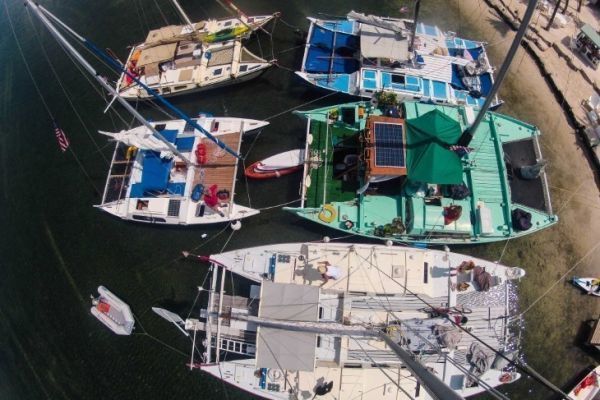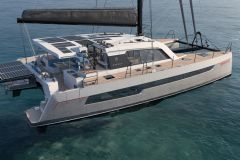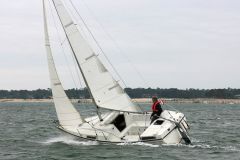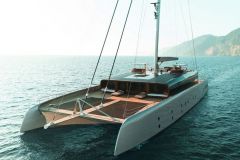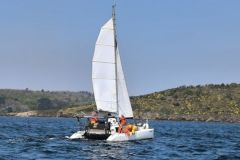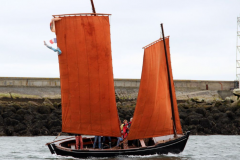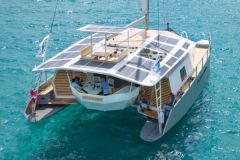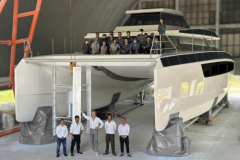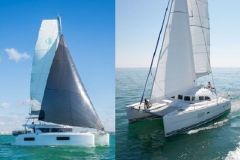The name James Wharram resonates in the sailing world as that of a visionary pioneer, a man who captured the very essence of the dream of adventure at sea. Since designing his first catamarans in the 1950s, he has enabled generations of sailors to embrace the spirit of independence and self-sufficiency as they crossed the oceans in self-built catamarans.
But if this dream endures, it's above all because Wharram catamarans aren't just boats: they're the means to accomplish feats, live incredible stories and touch the unattainable. Let's travel to the heart of the Wharram heritage to understand this timeless appeal.
Design for adventure
In 1953, James Wharram immersed himself in the study of Polynesian boats, influenced by Le Voyage du Kaimiloa by …ric de Bisschop. This research led to the design of Tangaroa, a 23-foot double catamaran-canoe. In 1955, accompanied by Jutta Schultze-Rhonhof and Ruth Merseburger, he crossed the Atlantic in this boat, from Europe to Trinidad. The expedition heralded a new era in catamaran transatlantic sailing.
At a time when the Western scientific community doubted the ability of Polynesians to sail steered over long distances, Wharram set out to prove the contrary by experiment. His conviction was reinforced when, between 1957 and 1958, he built the Rongo, a 40-foot catamaran with V-shaped hulls, in Trinidad. This boat, designed with the help of Bernard Moitessier, enabled him to complete the first west-to-east transatlantic race from New York to Ireland aboard a multihull in 1959.
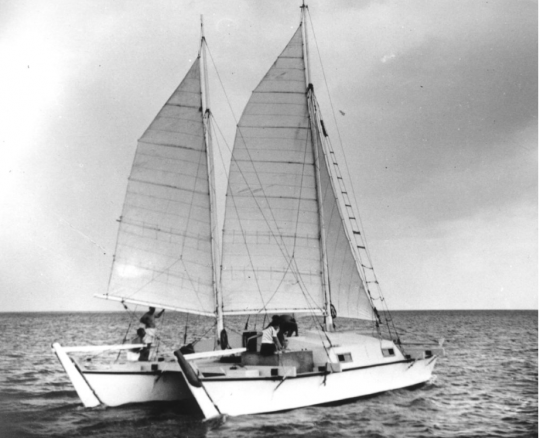
Unlike modern monohulls, which are often synonymous with luxury and fragility, our catamarans emphasize simplicity. Constructed from accessible materials, these boats can be repaired anywhere, making self-sufficiency possible even in the middle of the ocean. This pragmatism immediately appeals to adventure-seeking sailors.
In 1969, Wharram shared his story and vision in his book Two Girls Two Catamarans in which he recounts his first crossings and the difficulties he encountered with his traveling partners. The book quickly became a reference for multihull enthusiasts and self-builders alike.
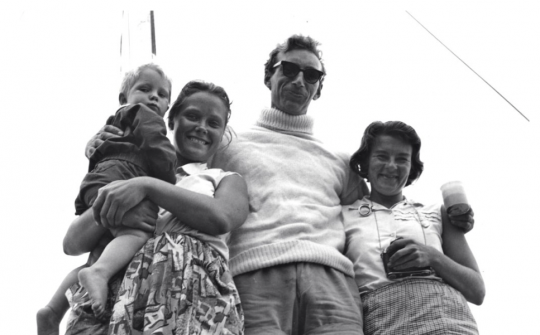
In the 1970s, James Wharram teamed up with co-designer Hanneke Boon, who played a key role in the evolution of his creations. In 1987, they built the Spirit of Gaia, a 63-foot catamaran, which took them around the world and into the Pacific. During this voyage, they deepened their study of Indo-Pacific canoes.
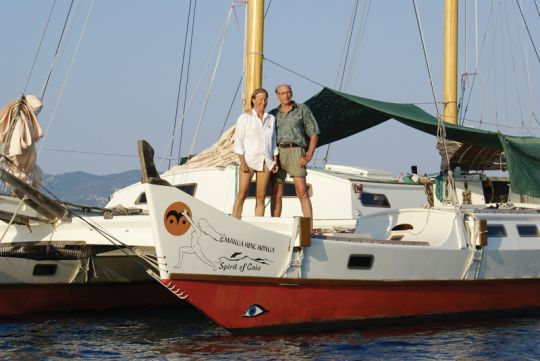
The essence of freedom for everyone
It is this aspect of self-sufficiency that attracts and continues to seduce yachtsmen. Wharram catamarans, far from being brimful of technology or complex electronics, emphasize simplicity of use and repair. For many, this is where the magic of the Wharram project lies: being able to build your own boat and sail without depending on modern infrastructures, on a catamaran capable of taking on anything, while living your dream of the sea to the full.
This philosophy has inspired generations of sailors. Since the 1960s, 10,000 sets of plans have been sold, and many Wharram owners have embarked on transoceanic adventures, often solo or as a couple: proof that these catamarans remain a viable solution for sailing dreams. Many of them keep blogs and publish videos of their adventures, which have been compiled on the official Wharram manufacturer's website to inspire those who wish to embark on this adventure themselves.

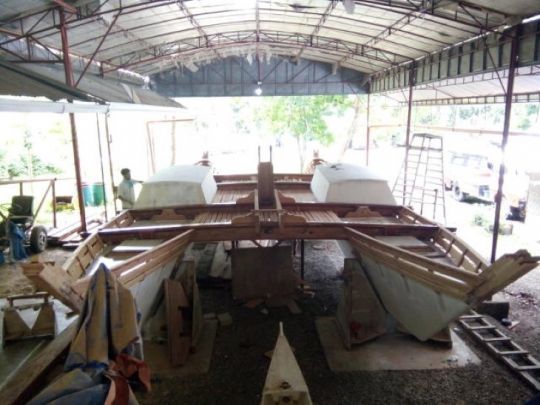
Among these stories is that of Sarah and James, an English couple who built their own Tiki 38 from Wharram's plans. After 2 years of preparation, they undertook an Atlantic crossing in 2011: '' We sought a raw, authentic ocean experience with just enough to survive and fully appreciate life at sea '', explains Sarah. Similarly, Ygal Golan and Leah Head launched their Tiki 38 "Yo Yo" after 3.5 years of intensive work in Israel, and found their catamaran a real gateway to enriching encounters.
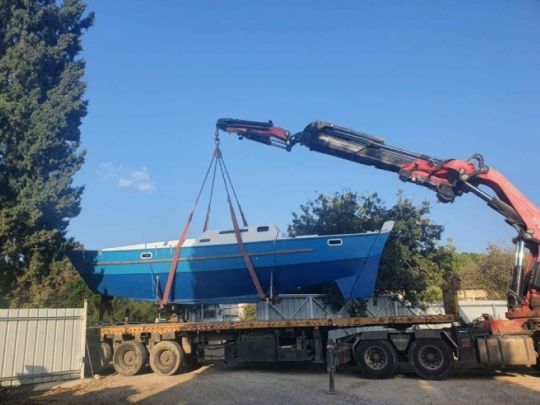
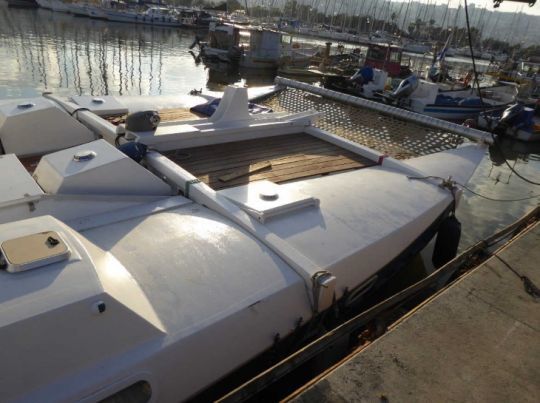
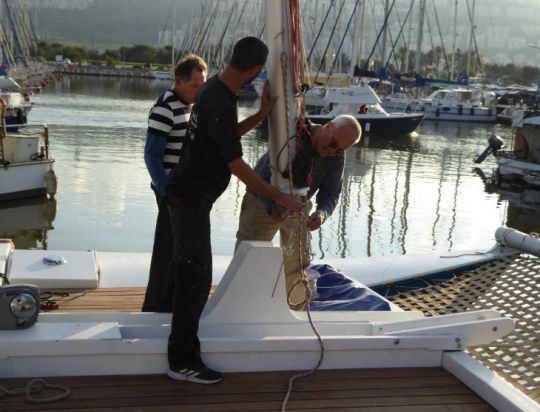
As Wharram owner Jens Einar Storheim explained, the human aspect is one of the most beautiful aspects of adventure, and the Wharram helps you connect: '' Locals, fishermen, tourists... of all ages... they're all drawn to the boat. They all see it as a traditional boat, and they have so many questions. We also had a lot of old sailors and fishermen on the boat, giving us tips and tricks about the local weather and harbors ''.
The Wharram story is also that of sailors who have pushed back physical and personal boundaries. For example, Sophie and Matthieu, a French couple who, after years living at sea on a Tiki 30 catamaran, describe the evolution of their relationship with the sea and with each other. Their multi-year voyage around the world was a transformative experience. They recount how each port of call, each storm, each encounter enabled them to reinvent themselves, to redefine their relationship with nature and with life itself. This kind of experience, shared by many sailors aboard Wharram catamarans, is an integral part of the dream that endures to this day. Their stories join those of many enthusiasts who see Wharrams not only as boats, but also as tools for emancipation and freedom.
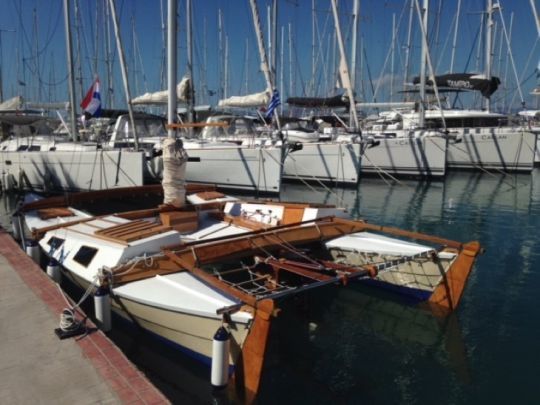
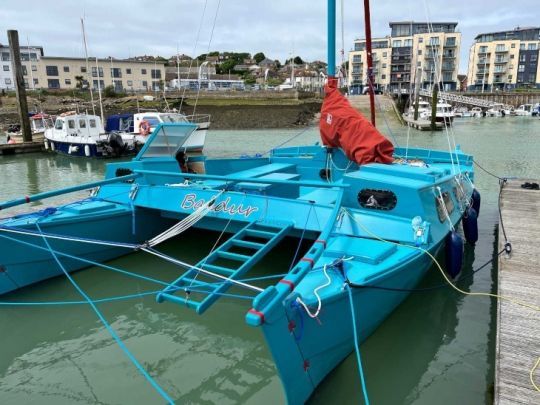

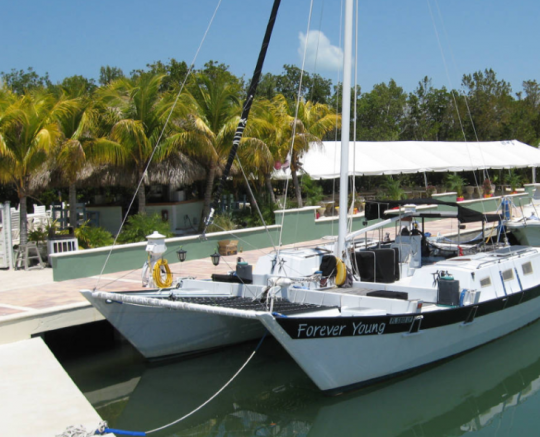
Eco-friendly design
At a time when ocean preservation is a global priority, Wharrams embody a more sustainable approach to sailing. Their wooden construction, unlike the synthetic materials such as fiberglass laminated with epoxy or polyester resin commonly used in many modern yachts, considerably reduces their ecological footprint.
Films retracing the history of the Wharrams, such as the one devoted to the construction of the Tehini, plunge us into an era marked by freedom and adventure, as well as the difficulties and joys of navigation.
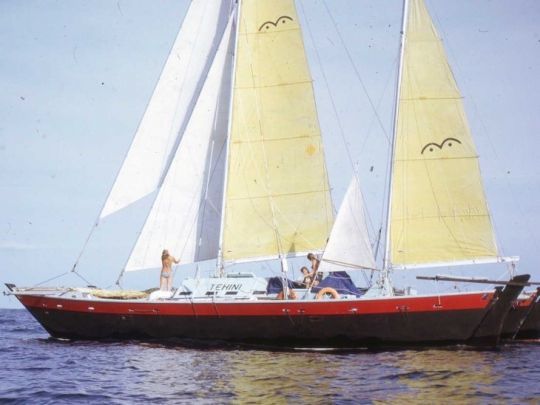
Architecture inspired by Polynesian canoes
Wharram's architecture, inspired by Polynesian double canoes, features separate hulls connected by rope crossbeams: a low-environmental-impact configuration that offers great flexibility. This structure better absorbs the forces of ocean waves, reducing the impact of marine stresses. The "Wharram Wingsail" rig, designed to minimize turbulence and maintain a low center of gravity, contributes to this stability and optimizes the yacht's sailing safety.
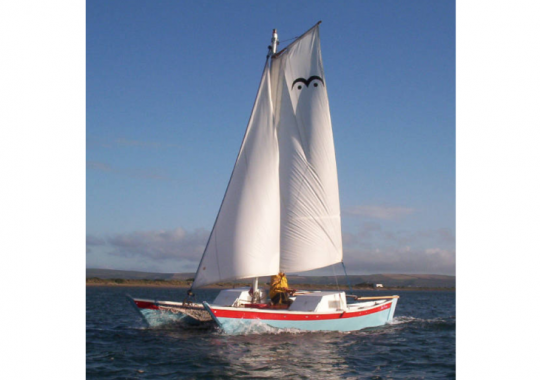
Wharram's efficient design is also evident in the construction of cabins and interiors. Following the principles of flexible design, these living spaces are both simple and functional. The use of resources is optimized, avoiding the superfluous.

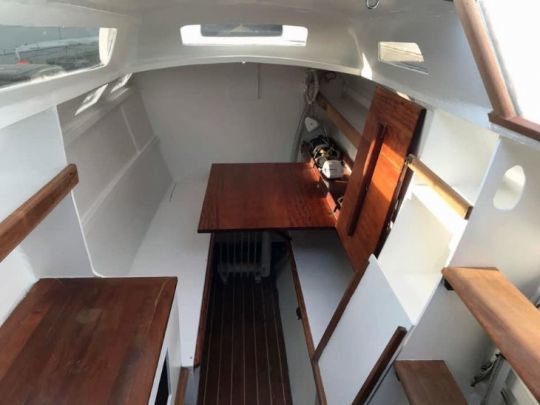
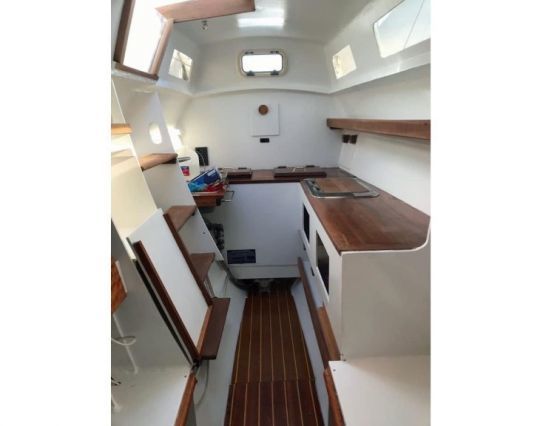
The slim hulls and V-shaped stern ensure low drag and allow the boat to sail with a shallow draft, making beaching easier and reducing the energy consumption needed to move forward. This minimalism, both functional and environmentally friendly, makes it an ideal choice for sailors wishing to rediscover the primordial joys of travel and discovery.
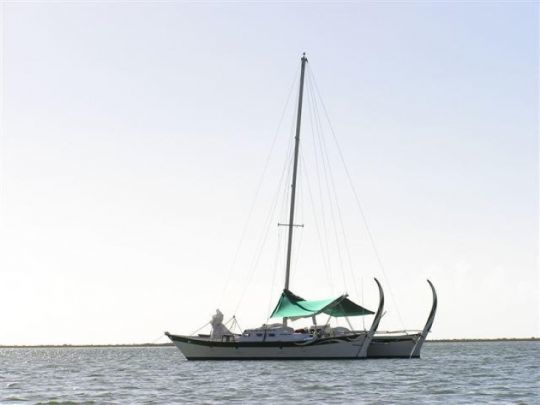


 /
/ 